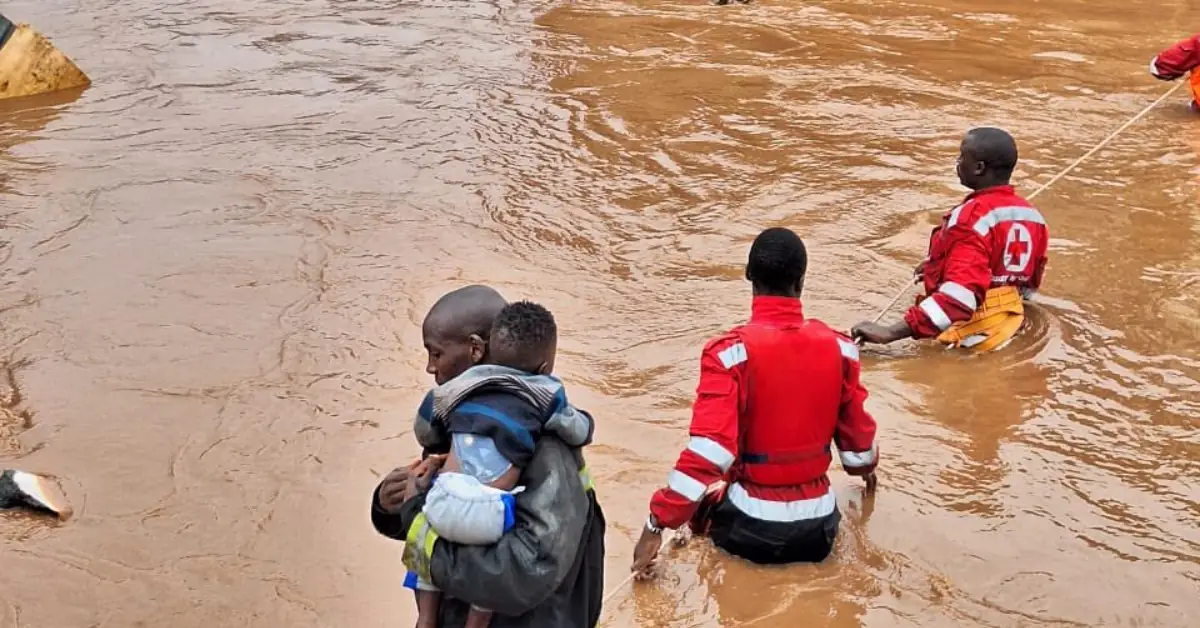
Kenya nairobi flooding – Kenya’s capital, Nairobi, has long grappled with the devastating effects of flooding, a persistent issue that has left an enduring mark on the city’s infrastructure, communities, and environment. Heavy rainfall, inadequate drainage systems, and urbanization have combined to create a perfect storm, exacerbating the frequency and severity of floods in recent years.
The consequences of flooding in Nairobi are far-reaching, affecting everything from transportation to public health to economic stability. Roads and bridges are often submerged, disrupting daily life and commerce. The spread of waterborne diseases poses a significant threat to public health, while businesses are forced to close, leading to job losses and economic hardship.
Overview of Flooding in Kenya’s Nairobi: Kenya Nairobi Flooding

Flooding has become a persistent and devastating issue in Nairobi, Kenya. The city experiences frequent and severe floods during the rainy seasons, causing significant damage to infrastructure, communities, and the environment. The flooding is primarily attributed to heavy rainfall, inadequate drainage systems, and rapid urbanization.
The impacts of flooding in Nairobi are far-reaching. Floods damage roads, bridges, and buildings, disrupting transportation and causing economic losses. They also pose significant public health risks, as they can lead to the spread of waterborne diseases. Additionally, flooding can cause environmental degradation, including soil erosion and pollution of water sources.
Causes and Contributing Factors
Heavy Rainfall
Nairobi experiences heavy rainfall during the rainy seasons, which often exceeds the capacity of the city’s drainage systems. The intense downpours can quickly overwhelm the drainage channels, leading to flooding in low-lying areas.
Poor Drainage Systems
Nairobi’s drainage systems are inadequate to handle the volume of rainwater during heavy rainfall. Many drainage channels are clogged with debris and waste, reducing their effectiveness in diverting water away from populated areas.
Urbanization
Rapid urbanization has contributed to the increased frequency and severity of flooding in Nairobi. As the city expands, natural drainage channels are often blocked or diverted, reducing the capacity of the environment to absorb and drain rainwater.
Climate Change
Climate change is exacerbating the flooding problem in Nairobi. Rising temperatures are leading to more intense and frequent rainfall events, which put a strain on the city’s drainage systems.
Impacts and Consequences of Flooding

Infrastructure Damage
Flooding causes significant damage to Nairobi’s infrastructure, including roads, bridges, and buildings. The floodwaters can erode road surfaces, damage bridges, and undermine building foundations, leading to costly repairs and disruptions to transportation.
Public Health Risks
Flooding poses serious public health risks. The stagnant water provides a breeding ground for mosquitoes, which can transmit diseases such as malaria and dengue fever. Additionally, floodwaters can contaminate water sources, increasing the risk of waterborne diseases like cholera and typhoid.
Economic Consequences, Kenya nairobi flooding
Flooding has severe economic consequences for Nairobi. Businesses are disrupted, as floodwaters can damage inventory, equipment, and transportation routes. Additionally, flooding can lead to loss of livelihoods for those who rely on daily income from informal sector activities.
Mitigation and Adaptation Strategies
Drainage Improvements
Improving drainage systems is crucial to mitigate flooding in Nairobi. This involves increasing the capacity of existing drainage channels, clearing debris, and constructing new drainage networks in vulnerable areas.
Flood Control Structures
Flood control structures, such as dams and retention ponds, can help to store excess rainwater and reduce the risk of flooding. These structures can be designed to hold water during heavy rainfall events and release it gradually when the risk of flooding has subsided.
Land Use Planning
Land use planning plays a vital role in reducing flood risks. By regulating development in flood-prone areas and promoting green infrastructure, such as parks and green roofs, cities can help to absorb rainwater and reduce runoff.
Community-Based Adaptation Measures
Community-based adaptation measures, such as early warning systems and community-led flood preparedness plans, can enhance resilience to flooding. These measures empower communities to take proactive steps to protect themselves and their property from flood damage.
Future Projections and Preparedness
Climate Change Projections
Climate change is expected to increase the frequency and severity of flooding in Nairobi. As temperatures rise and rainfall patterns become more erratic, the city will need to adapt to a changing climate.
Flood Preparedness and Response
Enhancing flood preparedness and response mechanisms is crucial for Nairobi. This includes investing in early warning systems, developing evacuation plans, and training emergency responders to manage flood events effectively.
Sustainable Urban Planning
Sustainable urban planning is essential for reducing flood risks in Nairobi. This involves incorporating flood risk management into land use planning, promoting green infrastructure, and implementing measures to reduce greenhouse gas emissions.
Outcome Summary
Addressing the challenge of flooding in Nairobi requires a comprehensive approach that encompasses both mitigation and adaptation strategies. Drainage improvements, flood control structures, and land use planning can help reduce flood risks, while community-based adaptation measures can enhance resilience and empower residents to cope with the impacts of flooding.
As climate change continues to intensify and the city’s population grows, it is imperative to invest in sustainable urban planning and flood risk management strategies. By working together, Nairobi can mitigate the effects of flooding and create a more resilient and sustainable city for its residents.
Clarifying Questions
What are the main causes of flooding in Nairobi?
The primary causes of flooding in Nairobi include heavy rainfall, poor drainage systems, and urbanization, which have been exacerbated by climate change.
What are the impacts of flooding on Nairobi’s infrastructure?
Flooding in Nairobi has devastating impacts on infrastructure, including roads, bridges, and buildings, disrupting transportation and causing significant damage.
How does flooding affect public health in Nairobi?
Flooding poses a major threat to public health in Nairobi, as it can lead to the spread of waterborne diseases such as cholera and typhoid.





